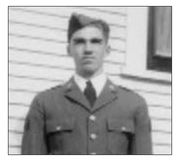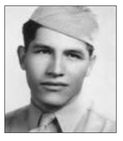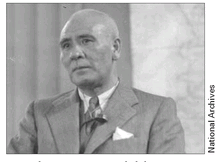War Stories II (9 page)
Authors: Oliver L. North

PRIVATE ANDREW MILLER, US ARMY
19th Air Base Squadron, 20th Group
Nichols Field, Philippines
8 December 1941
19th Air Base Squadron, 20th Group
Nichols Field, Philippines
8 December 1941

I was at Nichols Field and I didn't have to go on guard duty till midnight, so I went to the theater and I saw the first half of
Gone with the Wind
. I planned to go back the next nightâwhen I didn't have dutyâto see the second half. But as it turned out, I had to wait four years to get to see the second half of that doggone movie.
Gone with the Wind
. I planned to go back the next nightâwhen I didn't have dutyâto see the second half. But as it turned out, I had to wait four years to get to see the second half of that doggone movie.
At midnight I went on guard duty, and about four o'clock in the morning the sergeant said, “Wake me up at six.” And then he told me that Pearl Harbor had been hit and all of us were dumbstruck. We couldn't figure out why those guys in Hawaii hadn't been on alert. We'd been on alert for a couple of weeks and it just threw us.
But then, later that same day, we got caught with our own pants down. I guess in war nothing ever goes quite the way it's supposed to.

PRIVATE JOHN COOK, US ARMY
Fort McKinley, Philippines
8 December 1941
Fort McKinley, Philippines
8 December 1941

I was asleep in the barracks when the NCO in charge came in about three-thirty on Monday morning, turned on the lights, and shouted, “The Japs have bombed Pearl Harbor!” We had a formation outside and had to put on our field gear in the dark...from gas mask to helmets, fatigues, and everything. I was stationed at the hospital when we got our first patient early that morning from Nichols Field. I can still see that poor devil lying on the operating table. His heart was pumping the blood through his body, and he was all ripped upâhis arm was torn off, and there was a great big gaping hole in his side.
After we'd finished surgery, there was a bunch of fighter planes scurrying, and we thought they were Americans. Then we heard the
rat-a-tat-tat
and we took it serious. Some of the trees out there are pretty huge. They must have been thirty-six inches in diameter, and we got behind them. When the planes left we looked around the tree, and there were ridges cut three inches deep into the other sides. How none of us were killed I'll never know.
rat-a-tat-tat
and we took it serious. Some of the trees out there are pretty huge. They must have been thirty-six inches in diameter, and we got behind them. When the planes left we looked around the tree, and there were ridges cut three inches deep into the other sides. How none of us were killed I'll never know.

CORPORAL RALPH RODRIGUEZ, JR., US ARMY
Fort McKinley, Philippines
8 December 1941
Fort McKinley, Philippines
8 December 1941

It was Monday and I went to Catholic mass that morning. As we were coming out of the chapel, some airmen approached us and told us that the Japanese had bombed Pearl Harbor and the damage was great. I couldn't imagine what really happened but I figured maybe we're next. But all the anti-aircraft units of our regiment were already deployed around the airfield and they were ready. At least that's what we thought.
I was a medic and I wasn't supposed to carry a gun. I couldn't find any of the other medics from my unit, so I headed for the hospital. But on the way, a group of Japanese airplanes flew over. They were strafing the airfield. I saw a soldier with two boxes of ammunition running toward a machine gun mounted on a tripod and he hollered at me, “Give me a hand!”
Even though I'm not supposed to help carry a gun or anything, I fed the belts of ammo into the machine gun while he fired at four planes that tried to hit us. The bullets were going by us and this guy said, “We'll take those twoâdon't get too far away.” Every time a plane would shoot at us, we'd shoot right back at it.
Well, after the first set of planes dropped their bombs, there was a kind of a lull and we got some more ammunition. Then more Japanese
planes showed up. These were dive-bombers and even though we fired the gun a lot, I don't know if we hit any of them.
planes showed up. These were dive-bombers and even though we fired the gun a lot, I don't know if we hit any of them.
Nichols Field took a terrible pounding that day. It made us feel good to be able to shoot back. A lot of people didn't get to do that. Later that day, about four o'clock, I was sent to Manila to tend the wounded. We stayed there until Christmas Day, ready to fight.
 AMERICAN FAR EAST COMMAND
AMERICAN FAR EAST COMMANDMANILA, PHILIPPINES
13 DECEMBER 1941
1230 HOURS LOCAL
13 DECEMBER 1941
1230 HOURS LOCAL
Japanese attacks continued for the next several days. On 9 December, Nichols Field was attacked again with the same intensity that had rained down on Clark Field the day before. And more attacks followed for the next three days.
American airpower was soon reduced to nil. Four days after hostilities commenced, only six P-35 fighter planes were still operational, and though the mechanics managed to get a few of the obsolete P-26s running, they were no match for the Zekes and Zerosâeven though the Japanese had to conserve fuel to make the long flight from Formosa to southern Luzon.
From more than a hundred P-40s that had been functioning a week earlier, the Americans now had fewer than two dozen. Only a handful of bombers were still able to fly, and half of those were limited to low altitudes.
On 12 December, more than one hundred Japanese aircraft raided Manila and the surrounding military bases. On 13 December, they attacked with almost 200 planes. The next day, General MacArthur ordered the remnants of the Asiatic Fleet to depart for safer waters and the remaining long-range B-17s to fly south to Australia. Two days after they were gone, the Japanese aircraft carrier
Ryujo
moved into close range to finish the work that the long-range aircraft had started from Formosa. By then, MacArthur's Far East Air Force was useless. And with no fleet or air cover for protection, the 15,000 green American draftees and Reservists and
80,000 poorly trained and equipped Filipino soldiers digging in on southern Luzon could do little but wait for General Homma's 43,000 battle-hardened 14th Army to arrive. They didn't have long to wait.
Ryujo
moved into close range to finish the work that the long-range aircraft had started from Formosa. By then, MacArthur's Far East Air Force was useless. And with no fleet or air cover for protection, the 15,000 green American draftees and Reservists and
80,000 poorly trained and equipped Filipino soldiers digging in on southern Luzon could do little but wait for General Homma's 43,000 battle-hardened 14th Army to arrive. They didn't have long to wait.
 BATAAN PENINSULA
BATAAN PENINSULATHE PHILIPPINES
22 FEBRUARY 1942
1140 HOURS LOCAL
22 FEBRUARY 1942
1140 HOURS LOCAL
General Homma's troops began their three-pronged attack on Luzon by first seizing the tiny island of Bataanânorth of the main islandâon 8 December. While MacArthur's air force was being pounded by air raids, the Japanese marched ashore and overwhelmed the garrison guarding the airfield. Homma now had a refueling stop for his bombers returning to Formosa from their raids to the south.
Japanese landings on the north and west coasts of Luzon followed on 10 December, and a regimental-sized force was deployed from the Palau Islands to secure the port of Legaspi on 12 December, effectively isolating the U.S.-Filipino army in central Luzon. For the next ten days, the Japanese consolidated their supply lines and mercilessly suppressed any opposition they received from the civilian population.
Â
General Homma commanded the Japanese army occupying the Philippines.

Other books
Hey Mortality by Kinsella, Luke
Murder Begets Murder by Roderic Jeffries
Hungry Ghosts by Peggy Blair
Exchange Rate by Bonnie R. Paulson
The Predators’ Ball by Connie Bruck
Just One Night (Black Alcove #2) by Jami Wagner
Minstrel of the Water Willow by Elaina J Davidson
Complete Works of Rudyard Kipling (Illustrated) by Rudyard Kipling
Chase the Moon: A Historical Romance by Hubbard, Lynn
Running Free by K Webster
